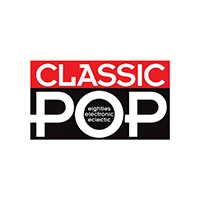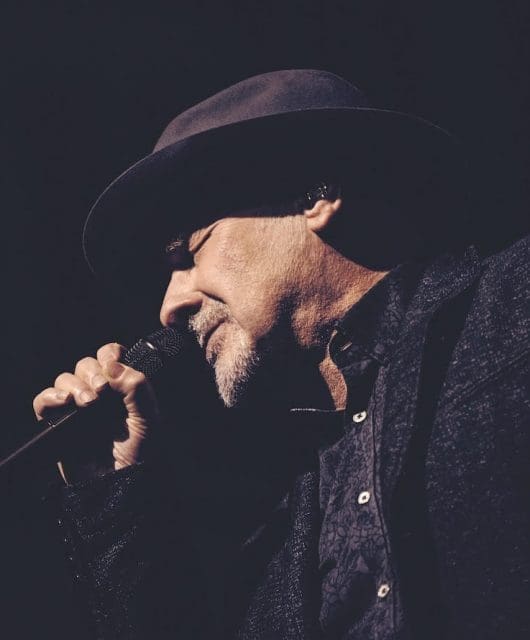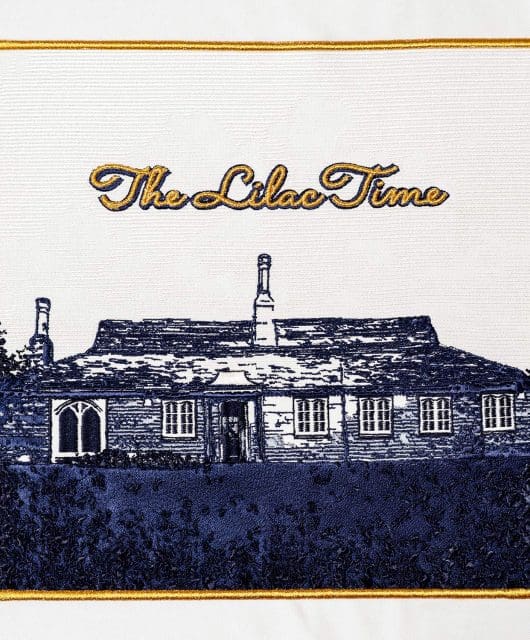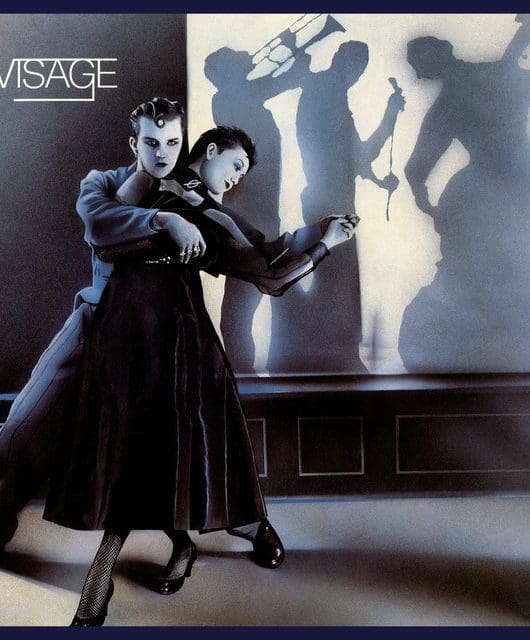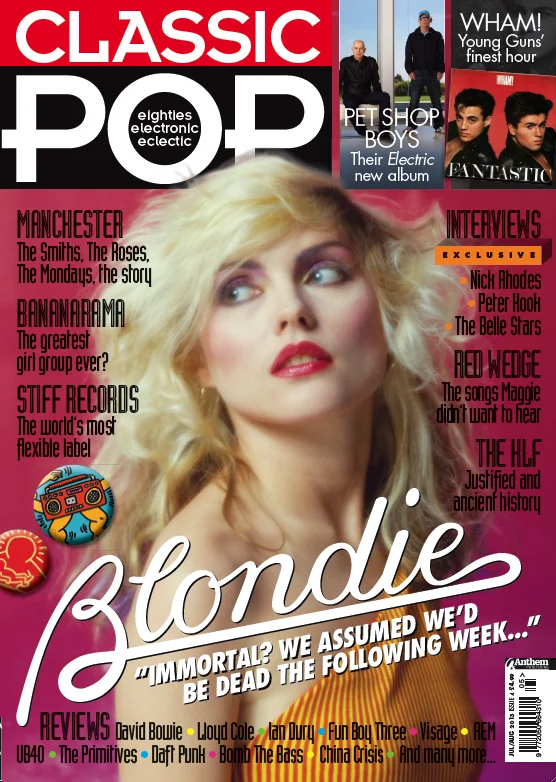Making Rick Astley: Whenever You Need Somebody
By Classic Pop | July 5, 2021
The musical merging of a northern soul boy with pop’s hottest production team, Rick Astley: Whenever You Need Somebody Rickrolled the music business, defying critics to sell more than 15 million copies – though for the singer, its success came at a hefty price… By Mark Lindores
 Although Rick Astley had been in various local bands and joined FBI as a drummer before taking over as lead singer, it was his discovery by Pete Waterman in a Warrington nightclub in 1985 which set him on the path to making music more than just a hobby. Impressed by Rick’s soulful voice, Waterman offered him the opportunity to move to London to pursue a career in music – the only proviso being that it was as a solo artist. Although Astley initially turned down Pete’s offer, after a few more months of working as a delivery driver by day and singing on the laborious Northern pub circuit at night, he conceded it was ultimately too good an opportunity to turn down. “[Stock Aitken Waterman] were not yet this massive great big all-conquering entity,” Rick later told The Independent. “They were just getting started. When I signed to them they were just about to have a No.1 record, so for me it was a bit of an adventure, really. I thought, I don’t really know who these guys are or what they are doing, but they seem to be doing something right, so this might be my one and only opportunity within the music business, so I just kind of did it. I didn’t really think that much about it.”
Although Rick Astley had been in various local bands and joined FBI as a drummer before taking over as lead singer, it was his discovery by Pete Waterman in a Warrington nightclub in 1985 which set him on the path to making music more than just a hobby. Impressed by Rick’s soulful voice, Waterman offered him the opportunity to move to London to pursue a career in music – the only proviso being that it was as a solo artist. Although Astley initially turned down Pete’s offer, after a few more months of working as a delivery driver by day and singing on the laborious Northern pub circuit at night, he conceded it was ultimately too good an opportunity to turn down. “[Stock Aitken Waterman] were not yet this massive great big all-conquering entity,” Rick later told The Independent. “They were just getting started. When I signed to them they were just about to have a No.1 record, so for me it was a bit of an adventure, really. I thought, I don’t really know who these guys are or what they are doing, but they seem to be doing something right, so this might be my one and only opportunity within the music business, so I just kind of did it. I didn’t really think that much about it.”
Arriving in London, Rick was initially completely dependant on Pete Waterman, who assumed the role of mentor, letting him stay in his flat and giving him a job at the PWL Hit Factory as an assistant, where his jobs included everything from working as a tape op to making tea, an apprenticeship that lasted almost two years. “It did drag on for a bit!” says Rick, whose only singing experience during this time had been as an uncredited duet partner on SAW protégé O’Chi Brown’s Learning To Live (Without Your Love) and a flop single When You Gonna with singer Lisa Carter. “I was seeing other people have No.1 hits, and I’d think: ‘Come on, boys’. But it wasn’t that they had forgotten me, they just had a lot of records to make. I knew, though, that when I got my turn, it would be a big thing, because Stock Aitken Waterman were becoming this big hit machine.”
By now dominating the charts with hits they had written and/or produced for Dead Or Alive, Bananarama, Mel & Kim, Princess and Sinitta, SAW were working hard behind the scenes on a sound they felt would highlight his talent. “At first, Pete felt we should do a Motown cover,” Mike Stock tells Classic Pop. “The first thing we recorded was [The Temptations’] Ain’t Too Proud To Beg and that’s when I first properly heard his voice. I said to Pete and Matt that singing a cover would be to underplay and undervalue his undoubted vocal strengths, and that we should write Rick his own song. That’s when we came up with Never Gonna Give You Up.”
With Pete privy to new sounds and club trends thanks to his ongoing DJ gigs as The Hitman, he brought records back to Mike and Matt as an indicator of what would be the next big thing.
At the time they were looking for a style for Rick, the Hi-NRG sound that had proved successful on their earlier hits was being phased out by American house music teamed with a strong soulful vocal – a perfect approach for their new male singer. The trio began looking to artists such as Steve Arrington and Colonel Abrams, with the latter’s Trapped being a key influence. “The bassline for Never Gonna Give You Up is not a sample or a steal from Colonel Abrams but a remodelling of the syncopation and played by us in the studio using our own keyboards,” Mike says.
Initial feedback was positive. Pete had been “testing” the record during his DJ sets and a one-minute excerpt on an Upcoming Things From PWL sampler sent to Capital Radio garnered instant airplay, leading to the single being released earlier than planned. The video perplexed those expecting a US soul singer, forcing the shy lad from Newton-le-Willows to repeatedly sing live to prove that his was the voice on the record. Released on 27 July 1987, Never Gonna Give You Up stayed at No.1 for five weeks and became the biggest-selling British single of the year.
While the public lapped up the fact that SAW had made their “teaboy” a star, Rick was not happy at the perception that he was “a puppet” and, while recording his debut album, suggested he should have some input into the LP that was to bear his name. His request was not welcomed by SAW, who were confident that they had already written a string of future hits for Rick. “I wasn’t happy with that arrangement and still believe this was a situation which should have been handled differently,” Mike Stock admits, “but I was busy with other artists and it kind of slipped by me at the time.”
With a roster of artists awaiting the SAW treatment, including Kylie Minogue, they compromised by allowing Astley to work on tracks with producer Daize Washbourne and PWL’s ‘B-Team’ of Phil Harding and Ian Curnow. The result was that four of Rick’s compositions made the album, though none were considered as singles – understandably, given the string of hits the album would produce.
Read more: Rick Astley interview
Read more: Bananarama – Pop Life
By the time Whenever You Need Somebody was released on 16 November 1987, Stock Aitken Waterman were beginning to face a critical backlash, with some reviewers taking exception to what they now deemed their “formulaic sound” – something Mike Stock is insistent upon refuting.
“It may not appear so, but, we always tried sonically to make all our artists distinct from one another,” he emphasises. “Jason Donovan, for example, always had guitars featured. Kylie never had guitars – although that changed later, after the acts were established. A Rick record at a speed of 114bpm was considerably slower than a Hazell Dean record at 130bpm, for example.”
Criticisms aside, if Stock Aitken Waterman had stumbled upon a formula for Rick then it was a winning one, as their modern take on classic disco was the perfect match for his deep, soulful voice. The album shot straight to No.1 in the UK and Australia, spawning a record-breaking singles run of subsequent hits in the title track, When I Fall In Love (released as a double A-side with non-album track My Arms Keep Missing You) and Together Forever.
While the scale of Rick’s success took many by surprise (including the perplexed star himself), its translation Stateside was even more noteworthy. With the exception of Bananarama’s Venus, SAW hadn’t experienced any real presence in the US so Never Gonna Give You Up’s transition from underground club hit – championed by Larry Levan during his legendary final sets at the Paradise Garage – to Billboard No.1 was even more remarkable. Together Forever followed it to the top of the US charts, and the album also reached the Top 10. A further single, the soulful, Motown-influenced It Would Take A Strong Strong Man, completed a successful US album campaign. As a devotee of American soul music, particularly Motown, Rick’s popularity in the United States was his career highlight and offered him a respite from the turmoil that success was causing him back home. Despite achieving a level of fame that far exceeded his wildest expectations, he was caught up in a whirlwind of travelling and promotion that took him away from his true passion, making music. Lonely, depressed and stressed, he compared his life to being “more like a travelling salesman than a musician or performer”.
As Stock Aitken Waterman’s chart dominance grew, so did disdain for them within the industry. As their most successful artist at that time, Rick found himself a scapegoat for that criticism and scrutiny. Unable to find any dirt to dig up on the clean-cut star, the press branded him boring, nicknaming him ‘Dick Spatsley’ and tracking down members of his old band to accuse him of selling them out. In an interview with Smash Hits in February 1988, Rick told the magazine of his frustration and that he planned to “disappear for a while”. “Looking back, I believe Rick would have preferred it if he’d had the support of a band on stage,” Mike says. “As a 19-year-old, touring the world and appearing on big stages all by yourself was understandably challenging.”
Read our Album By Album feature on Alison Moyet
Top 10 Vince Clarke remixes
Desperately unhappy with the fame that came with success, Rick released three further albums before “retiring” from music in 1993. He was thrust back into the spotlight in 2007 as the subject of the “Rickrolling” internet phenomenon, leading to a performance at the Macy’s Thanksgiving Parade in New York and an unexpected victory following an online voting campaign for the 2008 MTV Europe Music Awards to find the ‘Best Act Ever’.
Rick’s return to the spotlight, coupled with gigs on the retro tour circuit, saw a renewed enthusiasm for the music business. Older, wiser and now working very much on his own terms, the stage was set for 2016’s comeback with his 50 album – his first No.1 album since 1987. In 2018 Rick released the Beautiful Life album, a UK No.6, while 2019 saw the launch of The Best Of Me – a greatest hits collection that he plans to tour in 2020. And what does the writer of Never Gonna Give You Up think now? “We were a great team,” Mike Stock says. “We’re lucky that we still have an artist like Rick to make these appearances and still sing the song. Moments like that are still a great thrill for me.”
Rick Astley: Whenever You Need Somebody – The Songs
Never Gonna Give You Up
“By popular demand” may be an oft-used marketing ploy to drum up the appearance of public interest, but in the case of Never Gonna Give You Up it was the truth. Rush-released on 27 July 1987 after a one-minute teaser sent to radio stations on an Upcoming Things From PWL sampler garnered heavy airplay, the single was put out earlier than planned.
Signalling a sonic shift for Stock Aitken Waterman, the song moved away from the harsher Hi-NRG sound of their earlier hits to a more classic, disco-inspired feel, with Colonel Abrams’ hit Trapped and Steve Arrington as a blueprint. As well as topping the UK charts for five weeks and becoming the biggest-selling single of 1987, it reached No.1 in 25 countries – including the US.
Whenever You Need Somebody
After the runaway success of Never Gonna Give You Up , Stock Aitken Waterman needed a follow-up single for Rick – and quick. By this time they were busy churning out hits for Bananarama, Sinitta and Mel & Kim, and they recycled an old song to follow it.
Originally released as a single in 1985 by O’Chi Brown, Whenever You Need Somebody stalled at No.97, but Rick’s version made it another Top 10 hit for the team. It wasn’t Rick’s first connection with O’Chi; while working at PWL’s Hit Factory in 1986, he recorded a duet with her, Learning To Live (Without Your Love) for her album. He was uncredited on the album, and after his success her record company released the song as a single… though it failed to chart.
Together Forever
Originally planned to be Rick’s second single, Together Forever was arguably the strongest track on the album. However, it was held back until later in case a ‘big song’ was required to prolong the album’s lifespan. One of Stock Aitken Waterman’s best tracks, Together Forever was eventually released as the album’s fourth and final UK single on 12 January 1988. It peaked at No.2, though the SAW trio were able to keep on celebrating as they were only kept off the top spot by their own song – Kylie’s I Should Be So Lucky.
In the US, Together Forever was released as the follow-up to Never Gonna Give You Up and duly became Rick’s second US No.1 single. “When we’d done all the other tracks, we listened to them and thought… people have already bought Never Gonna Give You Up,” Mike Stock reflected. “What else is there [on the album] that really does compare? We needed Together Forever to get home to people what Rick could be.”
It Would Take A Strong Strong Man
SAW were long-time fans of US soul music, particularly Motown, and It Would Take A Strong Strong Man was a homage to male vocal harmony groups such as The Temptations and The Four Tops that Rick also loved so much (the legendary Detroit label also provided something of a Stock Aitken Waterman business blueprint). The track was stylistically different to the now classic SAW sound. Since it had been decided that Rick should be positioned as a soul man in the style of Luther Vandross and Colonel Abrams in the US, the song was released as a single in the States, where it became a Top 10 hit. A video was shot featuring Rick performing in a smoky jazz club.
The Love Has Gone
Rick’s major bugbear was that he was seen solely as a ‘puppet’ for Stock Aitken Waterman, and he insisted on having some of his own compositions on the album. The Love Has Gone was the first track on the album penned by Rick. Though the song is credited to Astley and ‘Dick Spatsley’, the latter was a pseudonym adopted by Rick as a riposte to the magazines that deliberately misspelled his name as a way of discrediting him. As SAW were increasingly busy and demand was growing for new Rick material, the Hit Factory’s ‘B-team’ of Phil Harding and Ian Curnow was enlisted to help out on production duties.
Don’t Say Goodbye
The one that got away; Don’t Say Goodbye is the album’s smash that never was. Bearing the hallmarks of classic SAW with a killer chorus, it could have been a huge hit had it been released as the final single, as planned. Alas, it was pulled in order to move on to Rick’s second album, though it did receive a limited release as a 12” single in Italy at the end of 1988, midway through the singles run of the Hold Me In Your Arms album.
Slipping Away
Another self-penned track, produced by Harding/Curnow, Slipping Away supplies a more soulful sound for Rick, not a million miles away from the funk-influenced, rare groove of Stock Aitken Waterman’s own hit Roadblock.
No More Looking For Love
Without much argument, this is the weakest song on the album. Although Daize Washbourne’s production successfully replicates the sound of the title track, alas it still isn’t enough to hide the fact that No More Looking For Love’s is somewhat lacking in memorable melody.
You Move Me
The best of Rick’s compositions on the album, You Move Me heralded a sexier, funkier direction and was featured as the B-side to It Would Take A Strong Strong Man in the US to capitalise on its inclusion as the soundtrack to the trailer of Tom Cruise’s movie Cocktail.
When I Fall In Love
A faithful yet ultimately pointless cover of the Nat King Cole standard, When I Fall In Love did its job of showcasing Rick’s soulful voice. Released as his third single, it was frontrunner to be 1987’s Christmas No.1 until EMI sneakily intervened by re-releasing the Nat King Cole original in a bid to diminish Astley’s sales. Their ploy worked, and their act Pet Shop Boys landed the top spot with Always On My Mind – payback for Never Gonna Give You Up keeping What Have I Done To Deserve This? from reaching No.1. Rick’s single was a double A-side, and the far superior My Arms Keep Missing You was switched to the lead track after Christmas.
Rick Astley’s official website
Duran Duran: Making Seven And The Ragged Tiger
Duran Duran: Making Rio
